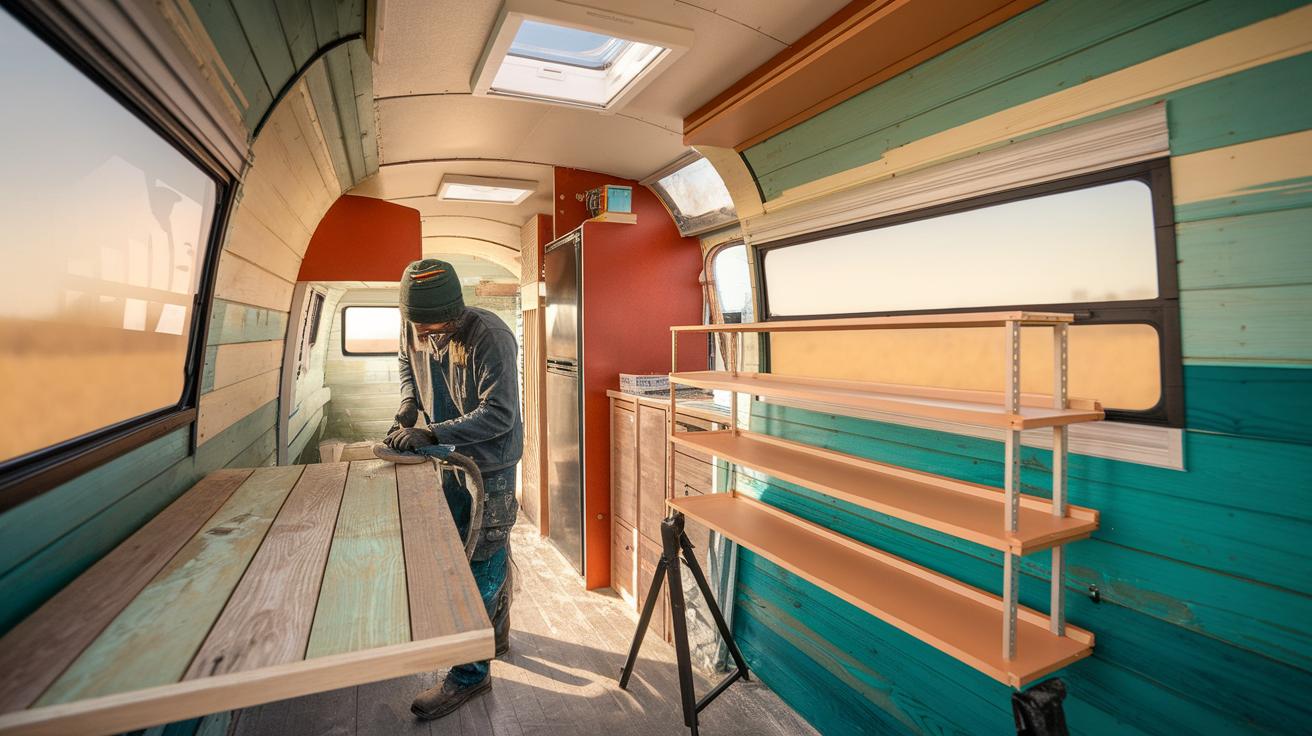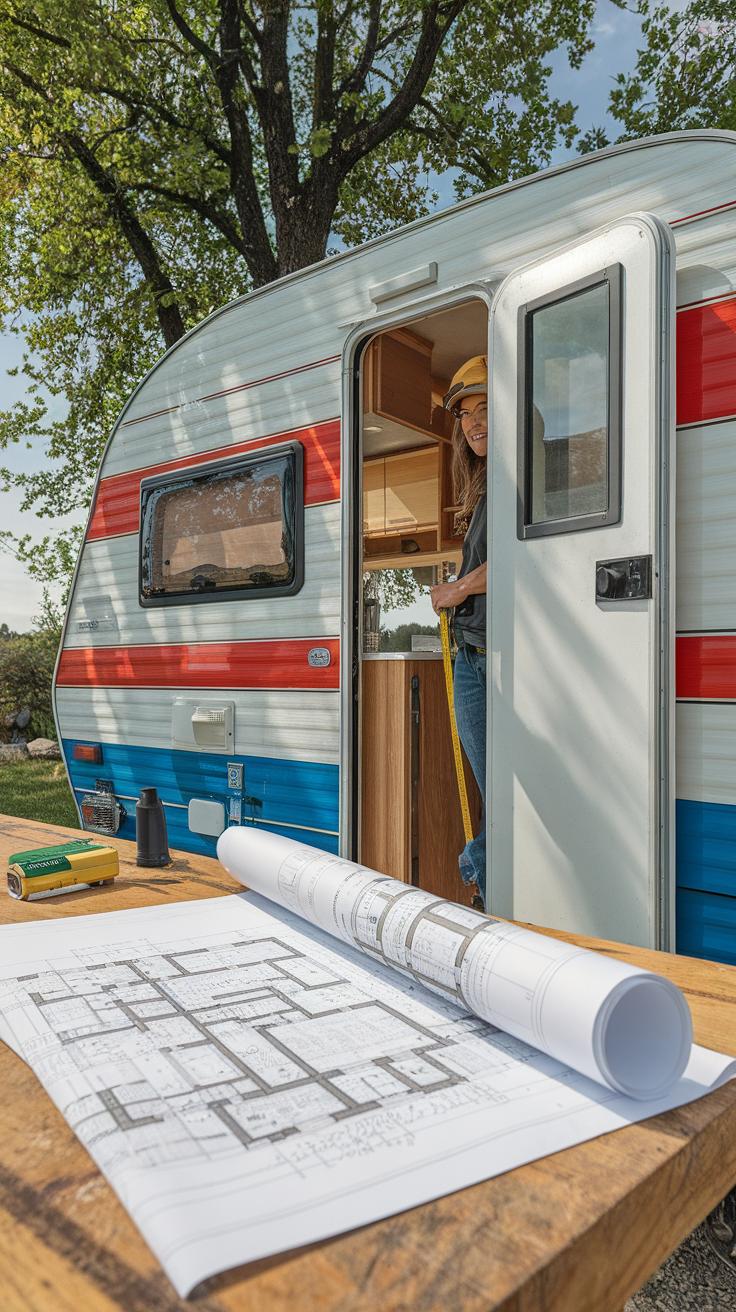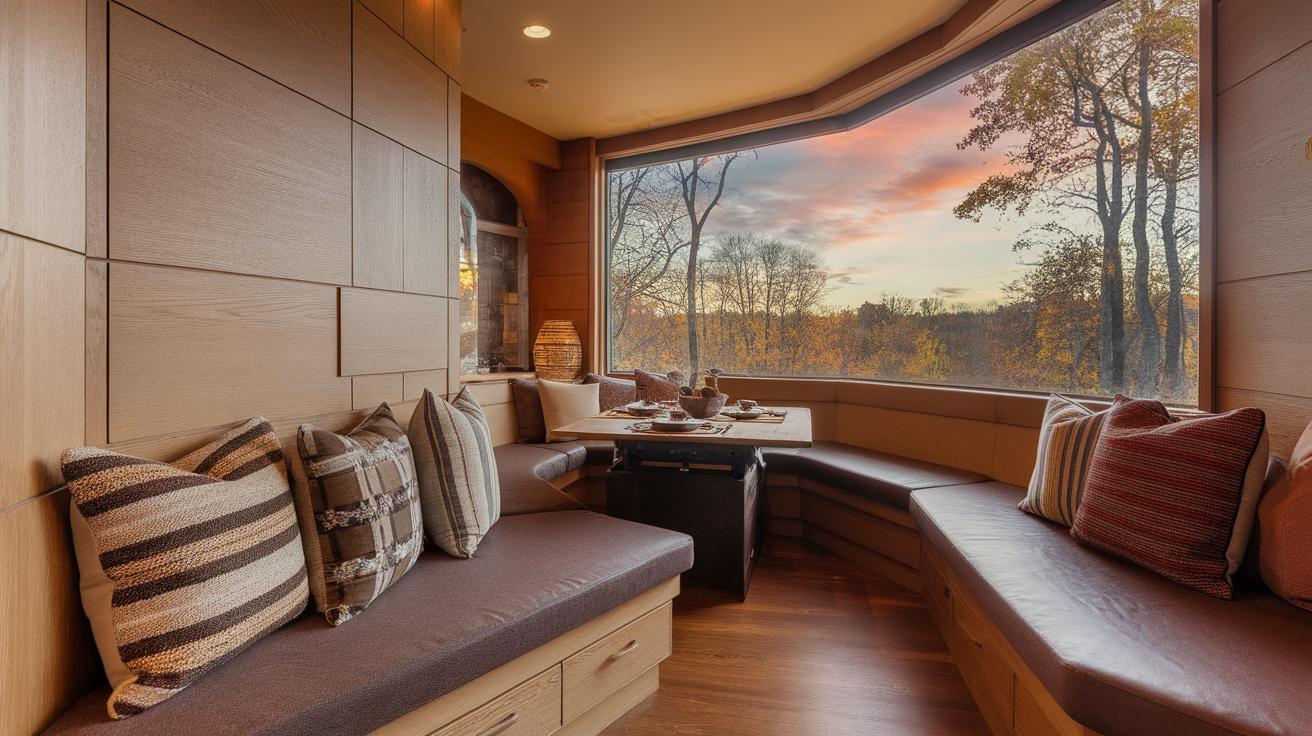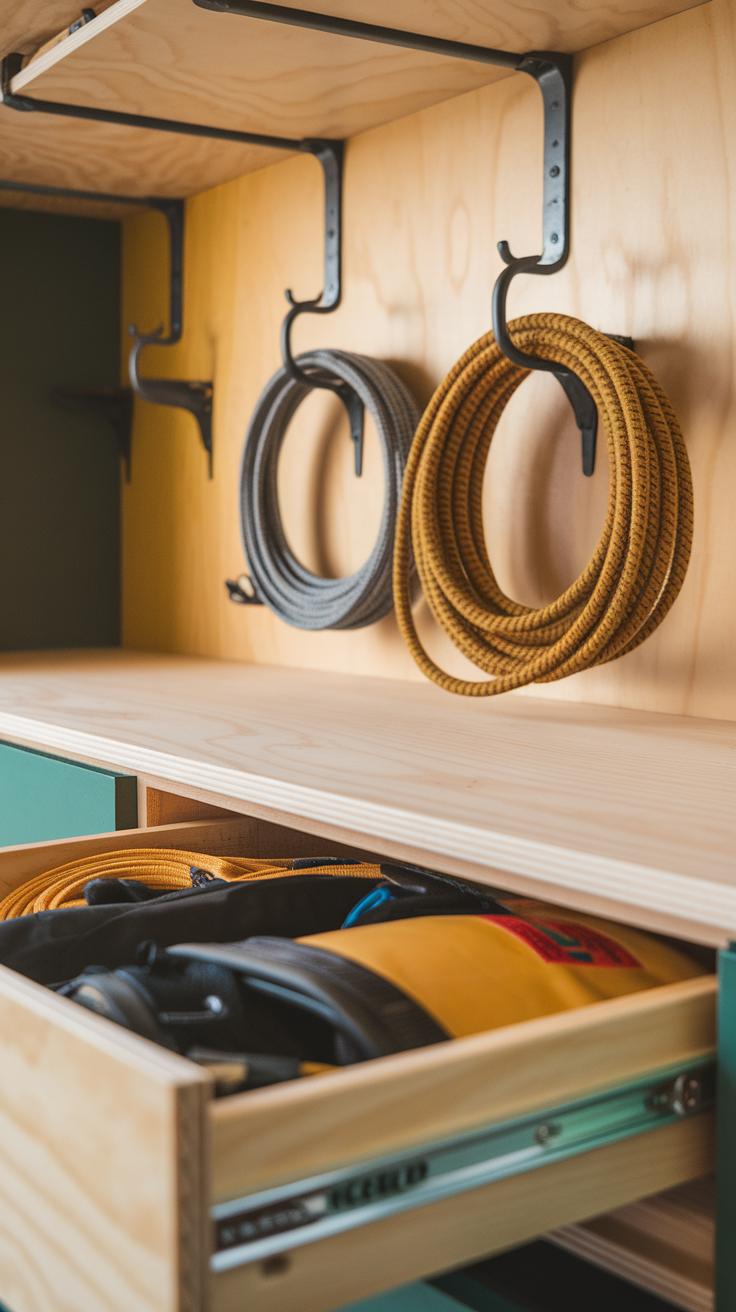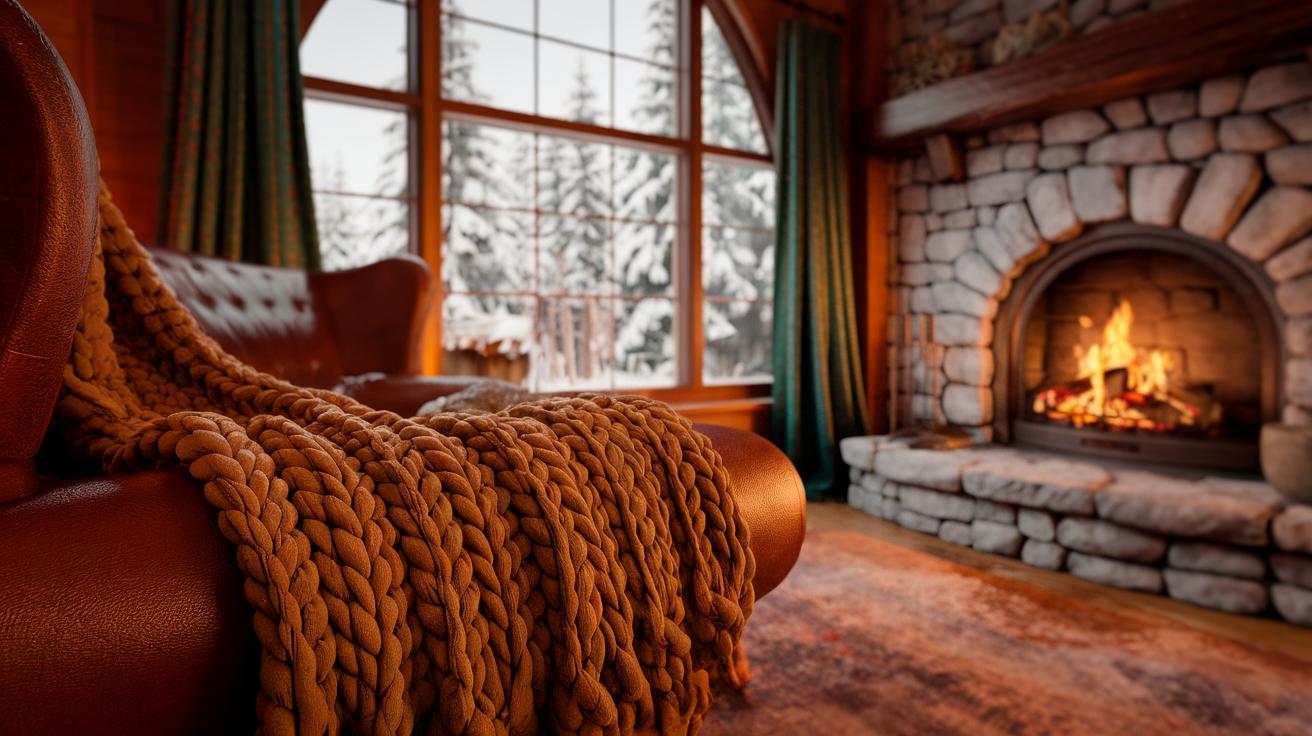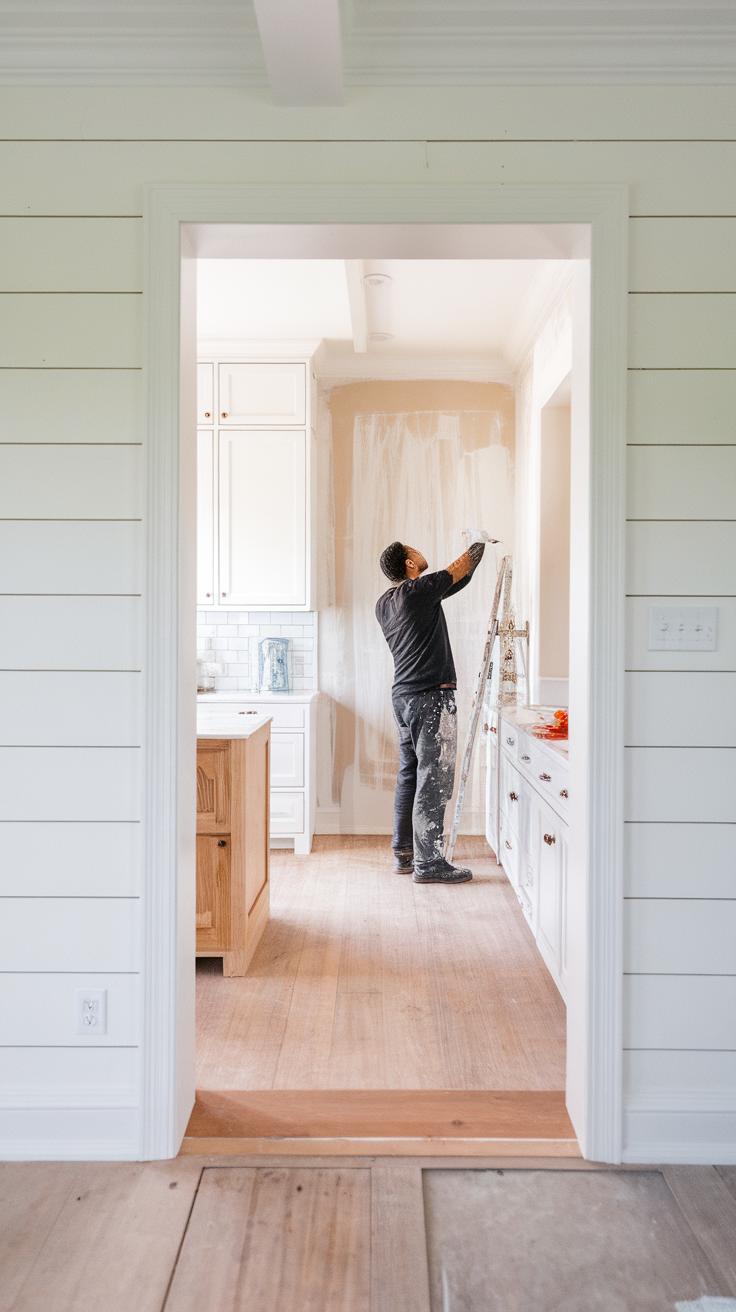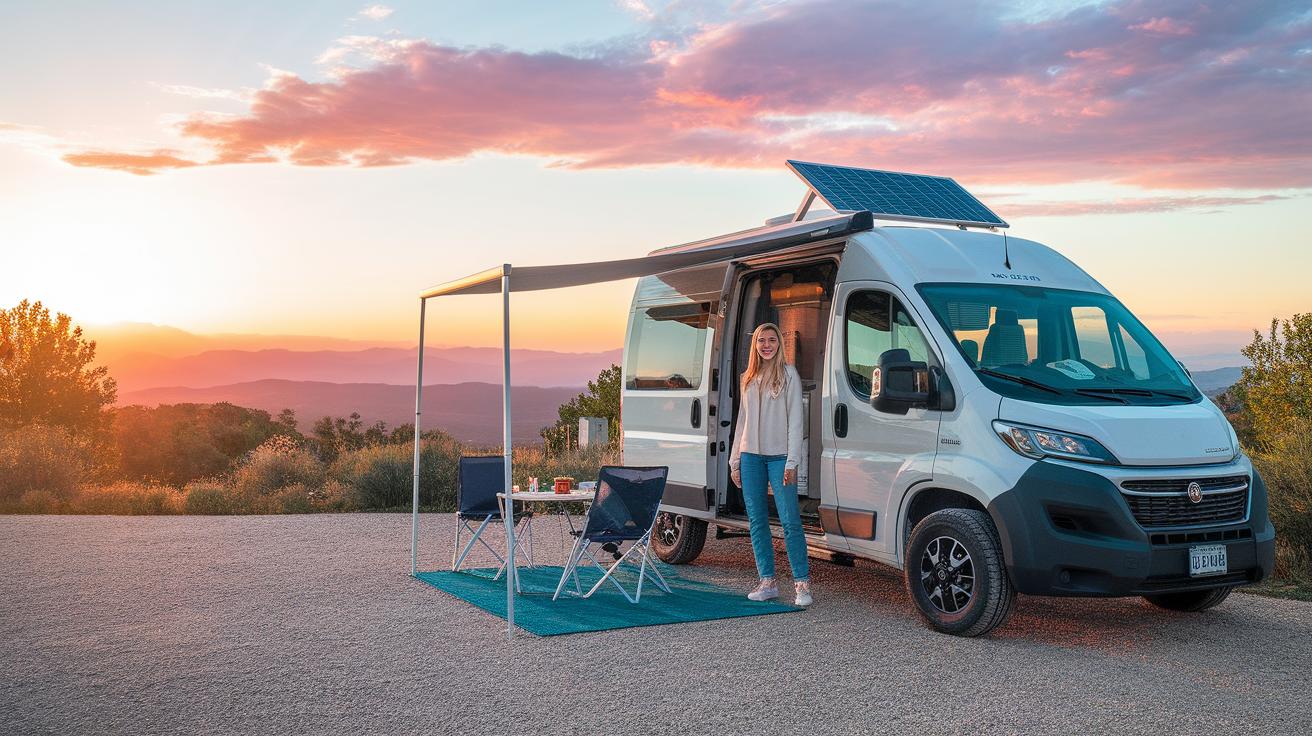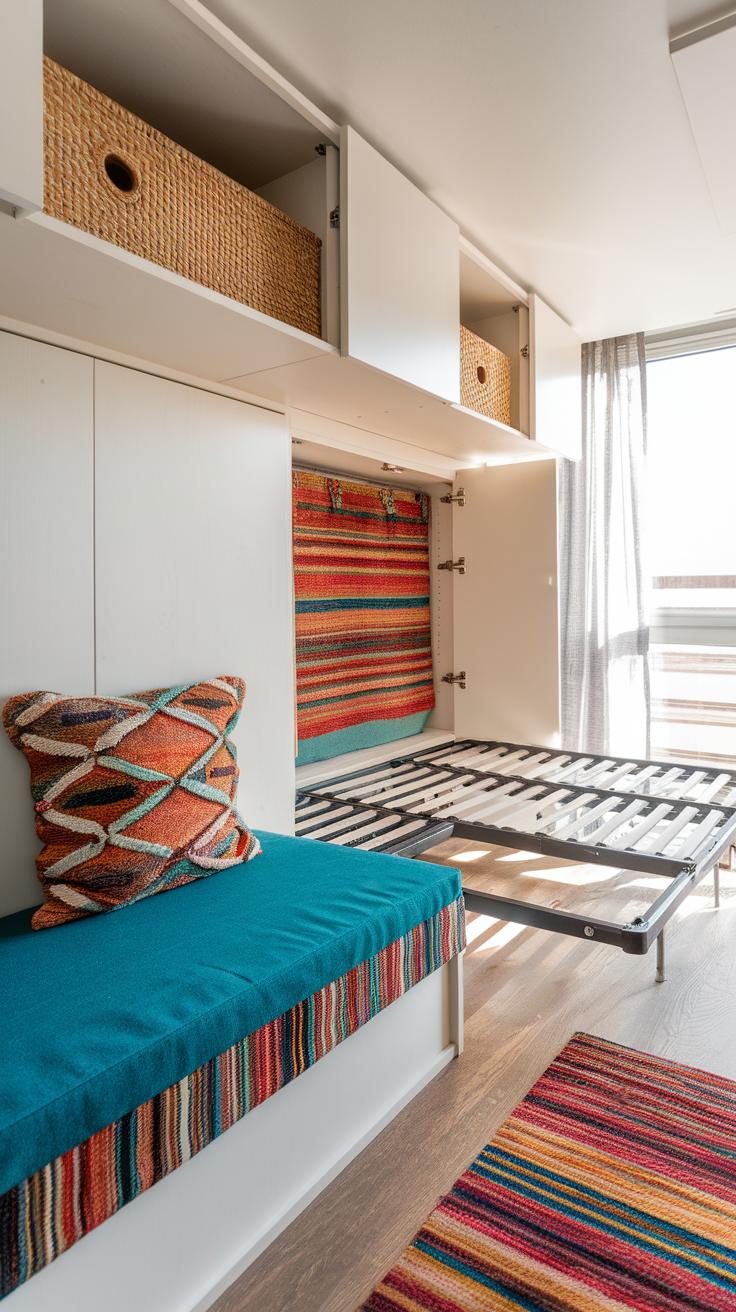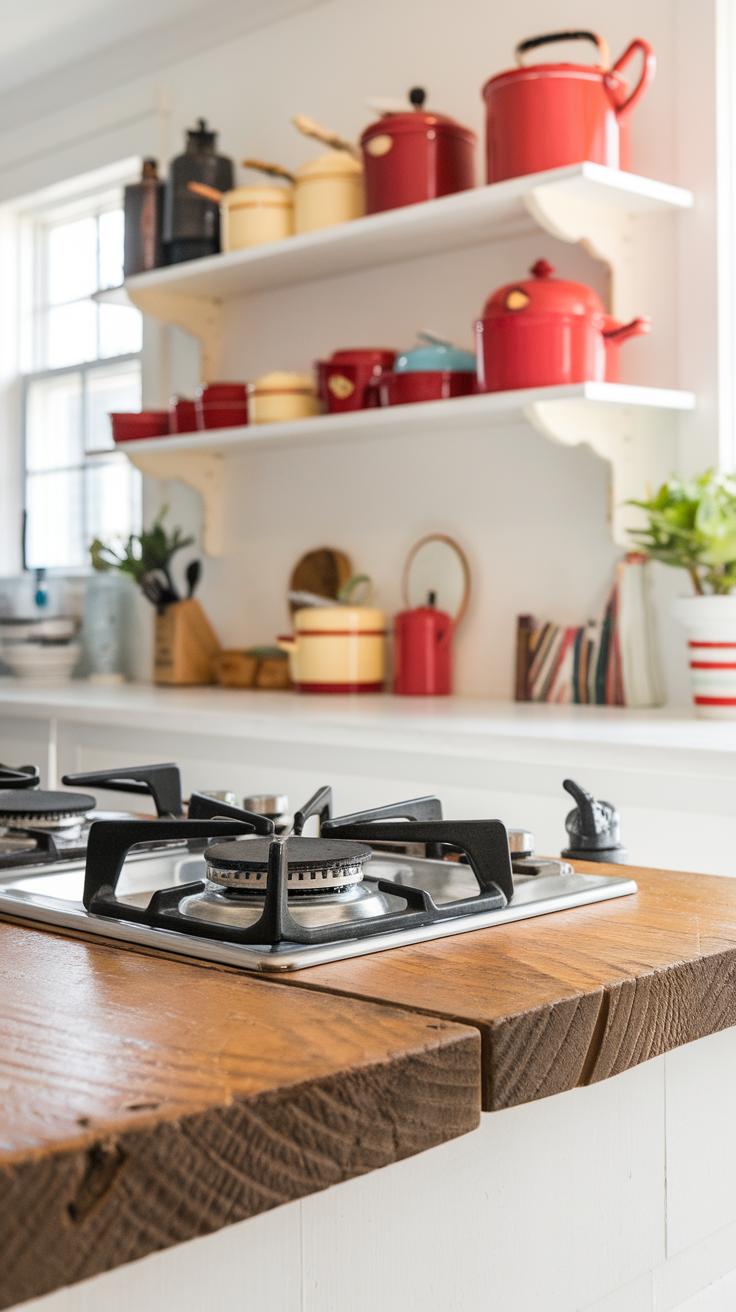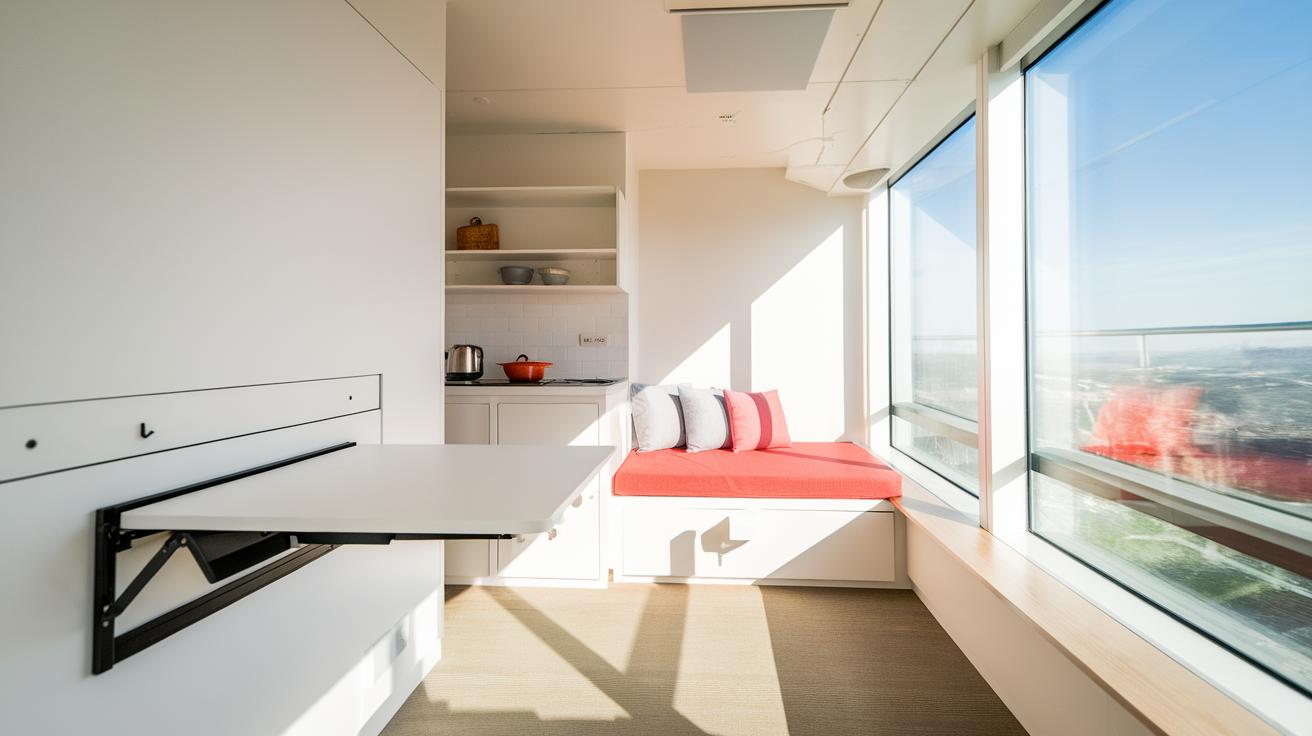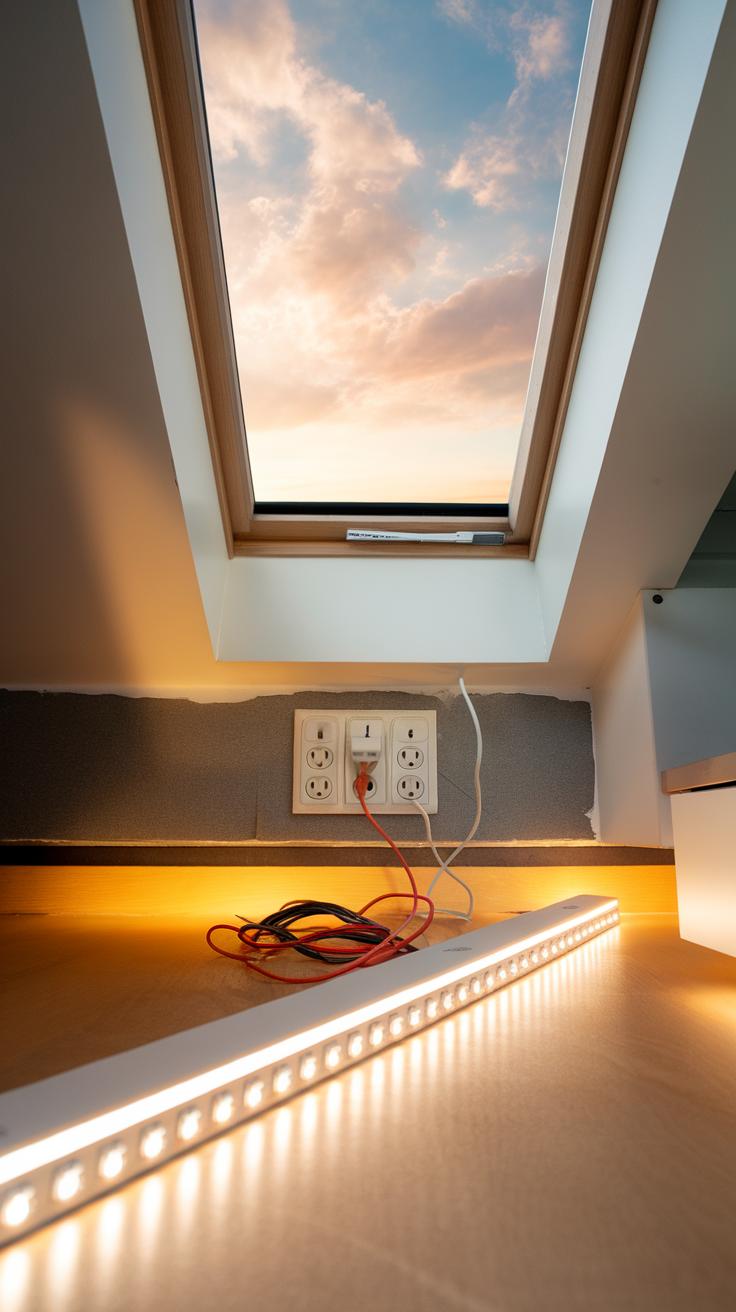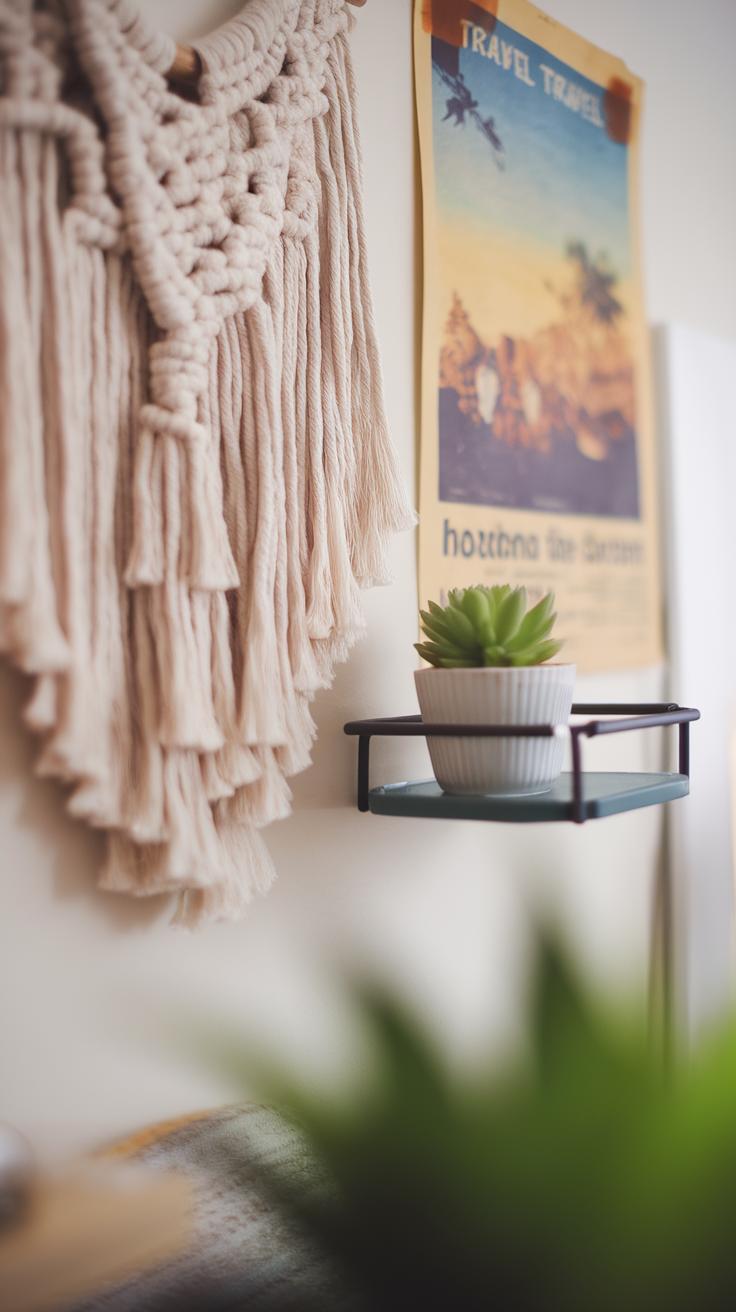Introduction
Renovating a camper can turn a simple vehicle into a comfortable and functional home for your travels. Many people want to upgrade their campers but worry about the cost. Budget friendly camper renovations offer a chance to improve your camper without spending a lot of money. You can focus on key areas that make a big impact, such as storage, seating, and small comforts. This approach keeps your renovation manageable and affordable.
When planning your camper renovation, it helps to understand which projects give the best value for your time and money. You will discover practical tips to refresh your camper’s look and make your space more usable. How can you optimize your camper for better living and travel experiences while staying within budget? This article guides you through smart renovation ideas to help you achieve your goals efficiently and economically.
Planning Your Camper Renovation
Start your camper renovation by carefully examining its current state. Look closely at what needs to be fixed or improved. Are the plumbing, electrical systems, and appliances working well? What about the floors and walls—do they show signs of wear or damage? Identifying these details helps you understand where your money and time should go first. Setting clear renovation goals based on your needs keeps the project focused. Do you want more comfort, better storage, or improved functionality?
Next, create a practical budget. Factor in costs for materials, tools, and any professional help you might need. Keep a reserve for unexpected expenses that can arise during renovation. Research prices, look for secondhand parts, and seek DIY-friendly options to save money. Planning with realistic goals and costs helps you avoid overspending and ensures your camper becomes a space you enjoy. What are the must-haves for your camper that you won’t compromise on?
Assessing Your Camper’s Needs
Walk through your camper and make a list of what works well and what doesn’t. Test doors, windows, faucets, and appliances. Check for leaks, rust, and mold. Ask yourself which broken or outdated parts affect daily use the most. Maybe the bed is uncomfortable, the kitchen lacks storage, or the heating system doesn’t work reliably. These should be your priority. Focusing on essential repairs and upgrades improves comfort and usability first, before moving on to decorative or non-essential changes.
Think about the tasks you do most in your camper. What needs to be easier or more efficient? Simple fixes like sealing a leaky window or replacing worn-out cushions can make a big difference. Which upgrades will give you the most benefit for your effort and money? What is truly necessary, and what can wait?
Setting a Realistic Budget and Goals
Begin by deciding how much you are willing to spend on your renovation. Break your budget into smaller parts, assigning funds to high-priority projects first. For example, allocate money to fix structural issues before upgrading the decor. Include extra money for unexpected repairs or changes that might occur once you open up walls or cabinets.
Set clear, achievable goals for each stage of your renovation. If your budget is limited, focus on one area at a time to avoid overwhelming yourself financially and physically. Look for cost-saving alternatives like using repurposed materials or doing some work yourself. Ask yourself: how can I get the best results without overspending? What compromises am I willing to make to stay within my budget?
Planning this way makes your renovation manageable and helps you track progress. How will you measure success for each phase of your camper project?
Improving Storage Solutions
Finding smart ways to increase storage inside your camper helps you keep things neat and easy to access. Simple shelves made from affordable plywood can fit in unused spaces like above windows or inside cabinets. Using clear plastic bins allows you to group items by type and see what’s inside without opening each container.
Think about how adding organizers to cabinet doors or hanging bags on hooks can save drawer space. Multi-use furniture also plays a big role in maximizing your camper’s storage potential.
Improving storage directly makes traveling smoother. When everything has its place, you waste less time searching and have room for essentials. What small changes could you make to your camper’s layout for better organization?
Using Multi-functional Furniture
Furniture that offers more than one function can greatly improve space efficiency in your camper. Benches with hidden storage compartments let you sit and store gear at the same time. A foldable table can turn a small eating area into open floor space when not in use.
Consider installing a couch that converts into a bed with drawers underneath. These dual-purpose pieces reduce clutter and give you more options for your limited square footage. You don’t need to buy expensive custom furniture; look for secondhand options or modify what you already have.
How could you combine seating and storage to keep your camper organized without making it feel cramped?
Installing Affordable Organizers
Affordable organizers are easy to add and make a big difference. Use plastic bins with lids to stack inside cabinets or under seating areas. Hanging organizers with pockets can hold kitchen tools, toiletries, or small gadgets.
Build simple shelves from wood planks and brackets to add storage wherever there’s wall space. Sticky hooks create spots to hang keys, hats, or jackets without drilling large holes.
All these solutions let you organize your belongings quickly without paying for professional help. What items do you find hardest to organize, and which of these options could help you?
Updating Interior Finishes
Updating your camper’s interior walls, floors, and ceilings doesn’t require a big budget. Choosing materials that are easy to clean and durable can save you time and money in the long run. Peel-and-stick wallpaper offers a simple way to add color and pattern without the mess of glue or the permanence of traditional wallpaper. Removable floor mats can protect underlying floors while adding softness and style. Painting is another affordable option that can brighten and refresh your space. Use semi-gloss or satin paint because it cleans easily and resists wear.
Think about your daily camper use. Will the materials hold up to heat, moisture, or heavy foot traffic? Selecting practical materials helps maintain a fresh interior over time. Could a small paint change completely renew your camper’s feel? Small changes often bring big results without hurting your wallet.
Refreshing Walls and Ceilings
Walls and ceilings shape the camper’s mood. Painting these surfaces is budget-friendly and lets you choose any color you like. White or light tones create a feeling of openness, while darker shades add warmth. Peel-and-stick wallpaper lets you try fun prints without damaging your walls. Some designs mimic wood paneling or tile, giving a fresh look without the hassle.
You can also install lightweight paneling on walls and ceilings. Thin plywood or beadboard panels are inexpensive and easy to cut. Attach panels with removable adhesive strips or small screws, making future updates easier. What style matches your camper best? Simple paint or textured panels can change the whole atmosphere quickly and cheaply.
Flooring Options on a Budget
New flooring does more than improve looks. It adds comfort and makes cleaning easier. Vinyl plank flooring comes in many styles and can be installed over existing floors without glue. Its waterproof nature suits campers well. If you want a soft option, use removable rugs or carpet tiles to create cozy spots. Look for stain-resistant and washable fabrics for easy upkeep.
Choose flooring that stands up to sand, dust, and water. Do you spend more time hiking or lounging? Your flooring choice should support your lifestyle. A durable floor with a removable rug gives versatility and comfort. Can a simple flooring change help you enjoy your camper more each day?
Upgrading Seating and Sleeping Areas
Your camper’s seating and sleeping areas play a big role in how relaxing your trips feel. Making these spaces more comfortable doesn’t have to cost a lot. Small changes can bring big improvements. Adding new cushions and slipcovers updates the look and the feel without replacing the whole furniture. Choosing fabrics that are easy to clean keeps your camper fresh after long days outside.
Think about making these areas flexible for different uses. A bench that converts into a bed or seats with storage underneath can save space and add comfort. How could rearranging your seating change how you relax or sleep? Practical ideas like these let you rest comfortably and enjoy more lounging space, all while sticking to a budget.
Improving Seating Comfort
Improving your camper’s seating starts with simple upgrades. You can add new cushions that use thicker foam or memory foam inserts for better support. Slipcovers in bright or neutral colors refresh old seats and hide wear. These covers also protect your seats against spills and stains.
Small touches like adding throw pillows made from durable materials can boost comfort and style too. If your seats have hard surfaces, consider a seat pad or cover with non-slip backing to keep it in place. Would your seat feel more inviting with just a few extra layers of padding? These low-cost changes can make sitting long hours much nicer.
Enhancing Sleeping Spaces
Good sleep depends on the right bed setup. Instead of replacing your mattress, try a mattress topper to add softness or firmness as you need. Memory foam or egg crate toppers work well to reduce pressure points. Fresh bedding also improves sleep. Choose breathable sheets and warm blankets that fit your camper’s style.
Modular beds offer flexibility for different camper layouts. Some fold or slide to fit both sleeping and sitting needs. How can a modular bed change your night’s rest or daytime comfort? Thinking about these options helps you sleep better without spending a lot. Upgrading your sleeping space with practical solutions creates a cozy retreat after a long day outdoors.
Upgrading the Kitchen on a Budget
Your camper kitchen can become more practical without extensive remodeling. Start by focusing on small changes that improve daily use. Replacing outdated fixtures enhances both appearance and function. Installing a new faucet with a pull-out sprayer or a simple lever design can make cleaning easier and save water. Portable appliances provide flexibility. A compact induction cooktop or a small slow cooker can expand your cooking options without the need for built-in units. These can be stored away when not in use, keeping counters free.
Think about how you arrange your kitchen tools. Clutter slows down meal prep and reduces space. Using magnetic strips for knives or hooks for utensils can clear drawer space. Stackable containers for spices and dry goods keep ingredients accessible and organized. These steps make cooking in a tight space quicker and more enjoyable, without breaking your budget.
Simple Fixture and Appliance Updates
Swapping out old faucets for newer models offers both style and utility improvements. Look for faucets that conserve water and have easy controls. Adding a portable stove gives you a cooking option when you want to cook outside or don’t want to rely on the main stove. LED strip lights under cabinets or battery-powered puck lights bring better light to workspace areas without rewiring. These upgrades cost little but change how you use your kitchen.
Organizing Kitchen Tools and Space
Maximize space by choosing storage that fits your camper’s size. Use drawer dividers to keep utensils neat and accessible. Small baskets or bins can hold spices or packets securely. Hang pots and pans on wall-mounted racks or behind cabinet doors to free up shelf space. Folding cutting boards and collapsible bowls save room too. Organizing your kitchen this way cuts down on the time and effort needed to find what you need.
Lighting and Electrical Upgrades
Improving your camper’s lighting and electrical system doesn’t have to cost a lot. Small upgrades make a big difference in comfort and convenience. Consider swapping out old bulbs with LED lights. They use less power and last longer, which is perfect for a camper where saving energy matters. You can place LED strips under cabinets, along shelves, or near the ceiling to brighten dark areas. This not only enhances visibility but also adds a clean, modern look to your space.
Think about where you need light the most. Task lighting near the kitchen or work areas helps you see better when cooking or fixing things. Soft, warm LEDs near seating areas create a comfortable atmosphere without using much electricity. Switching to LEDs will lower your power use, so your camper battery or solar setup will last longer.
Installing Efficient Lighting
LED lights are a smart choice for campers because they consume about 75% less energy than traditional bulbs. You can install them inside cabinets, above the sink, or along pathways to improve visibility without brightening the whole space. Their low heat output also keeps your camper cooler, especially in summer.
Energy savings add up quickly on long trips when power is limited. You can install motion sensor LEDs for areas like the bathroom or entryway to avoid wasting power when lights aren’t needed. Have you checked if your current lights are wasting energy? Upgrading to LEDs creates a balance of good lighting and power efficiency.
Adding Solar and Power Solutions
Solar power offers a cost-effective way to generate electricity on the road. Basic solar panels can store energy in batteries to power your lights, charge phones, and run small appliances. Start with portable panels you can angle toward the sun during the day and pack away at night.
Small solar kits often cost under a few hundred dollars and can cover essential needs without complicated setups. Think about adding a simple charge controller and battery to keep your power steady. Solar power reduces reliance on campground hookups or running a generator, saving money and noise.
Have you considered how much energy you really need? Small solar setups fit most camper habits, especially if you use energy-efficient LEDs. Adding extra outlets inside your camper makes charging devices easier. Plan where you place those outlets to match your daily routine and gear.
Adding Personal Touches and Decor
Small decorative elements can make your camper feel more like home without spending much. Try using removable wall art, such as peel-and-stick decals or posters hung with washi tape. These won’t damage walls and can change with your mood or travel location. Adding textiles like colorful curtains or patterned tablecloths brightens the space instantly. Plants bring life and fresh air inside, and low-maintenance options like succulents work well for camper living. What personal items make you feel calm and happy? Including those shows your style and matches your travel lifestyle. Simple swaps like new pillow covers or a cheerful throw can transform the interior. Focus on easy changes you can update or pack away when needed. This keeps the camper comfortable and flexible for any journey.
Affordable Decor Ideas
Wall decals offer a fast, low-cost way to add personality. Choose travel-themed designs like maps or adventure quotes that reflect your goals. String lights create soft lighting and can double as decor. DIY crafts such as painted jars for storage or homemade bunting give your camper charm without extra cost. Gathering souvenirs during travels, like postcards or shells, can decorate shelves and remind you of places visited. These simple projects let you customize the space without complex installs or pricey materials. What craft project could you start today to add a unique touch?
Practical Personalization
Choosing a color scheme helps unify the space and make it inviting. Neutral tones with bursts of your favorite colors work well to keep the camper calm and bright. Select throws and cushions that feel soft and cozy, which improve comfort after long days on the road. Practical items like storage baskets also add style while keeping things organized. You might pick fabrics that are easy to wash and dry quickly for life on the move. Think about what makes you relax when you are at home and bring that into your camper’s atmosphere. How can color and comfort combine to reflect your personality and travel habits?
Maintaining and Caring for Your Renovated Camper
Your camper renovation is an investment in comfort and adventure. Keeping it in good shape requires ongoing care that protects your work and extends your camper’s life.
Small tasks like cleaning, checking seals, and inspecting appliances prevent bigger problems. What happens if you ignore a small leak? Water damage could ruin walls and floors, undoing your renovations quickly.
Regular maintenance keeps everything functioning smoothly. Simple upkeep can save money by avoiding emergency repairs. What signs should you watch for? Listen for strange noises, look for water stains, and monitor how appliances perform.
Taking time for minor repairs soon after you spot them stops wear from spreading. Your renovated camper will stay cozy and reliable, ready for your next trip.
Regular Cleaning and Checks
Daily and weekly cleaning helps prevent dirt buildup and mold. Wipe down surfaces, vacuum floors, and empty trash frequently.
Inspect your camper’s systems—plumbing, electrical, and ventilation—every week. Look for leaks, loose wires, or blocked vents.
How often do you check inside cabinets or behind furniture? These hidden spots collect dust and can hide mold before it spreads.
Keeping a checklist ensures you don’t miss important chores. A clean camper feels fresh and keeps your renovation work looking new longer.
Timely Repairs and Upkeep
Spot problems early to fix them affordably. A small crack in cabinetry might not seem urgent but addressing it right away prevents it from worsening.
Keep basic repair tools handy. Tightening loose screws or fixing a leaky faucet can often be done yourself.
When should you call a professional? If a repair involves electrical work or plumbing beyond simple fixes, it’s safer and cheaper long-term to get expert help.
Regular upkeep reduces costly damage and keeps your camper ready to hit the road. What repairs have you left too long? Start today to extend the life of your camper and renovation work.
Conclusions
Investing in budget friendly camper renovation projects brings many benefits. You can create a more comfortable, attractive, and personalized space for your adventures. Small changes add up to a noticeable difference. Careful planning helps you focus on areas that improve living quality and increase your camper’s usability.
With these strategies, renovation becomes achievable and enjoyable. Your camper can transform without high costs or complex work. Keep your goals clear and prioritize projects that matter most to you. This way, you can enjoy your camper journeys with a refreshed, practical, and cozy camper that feels like home.


